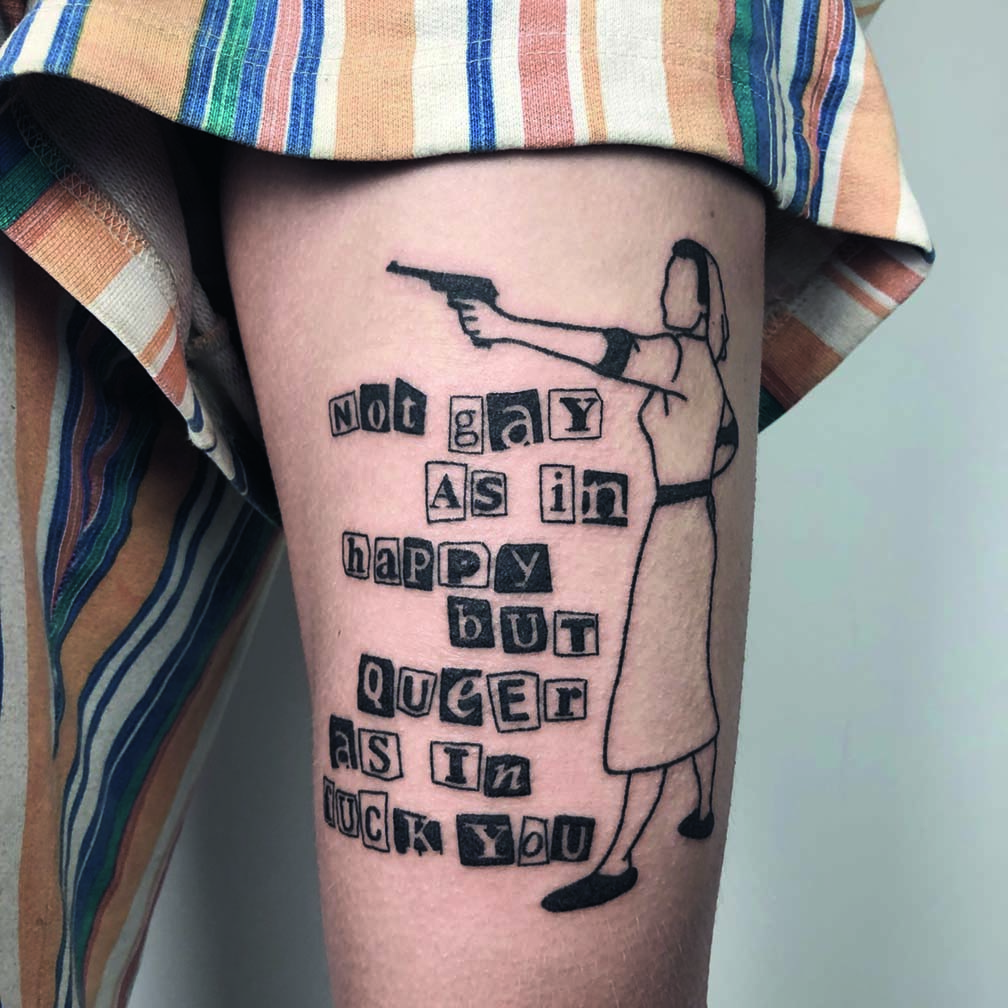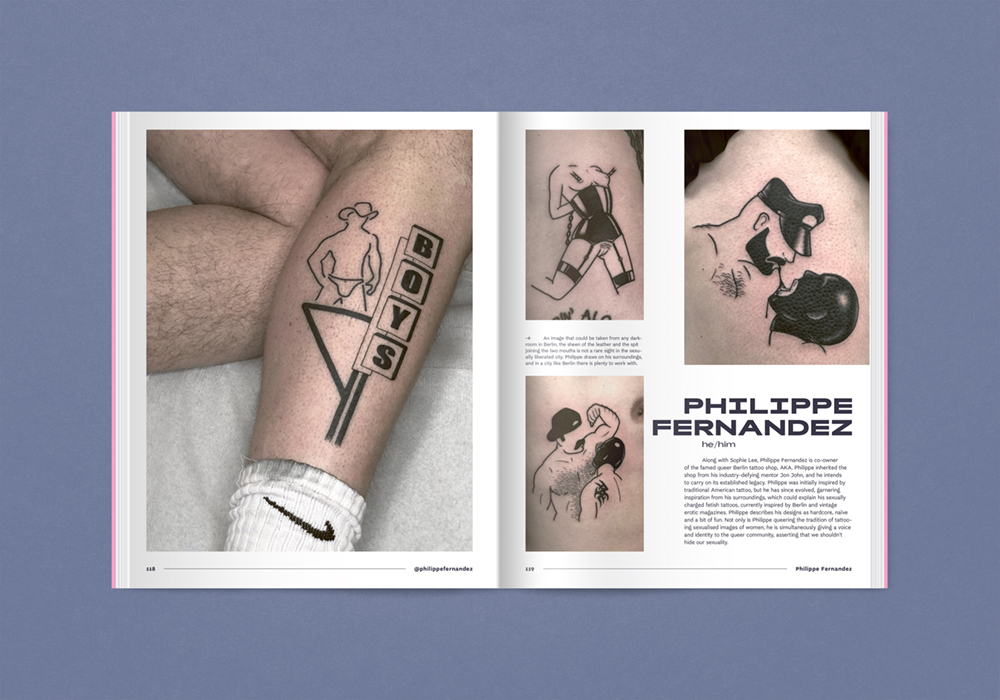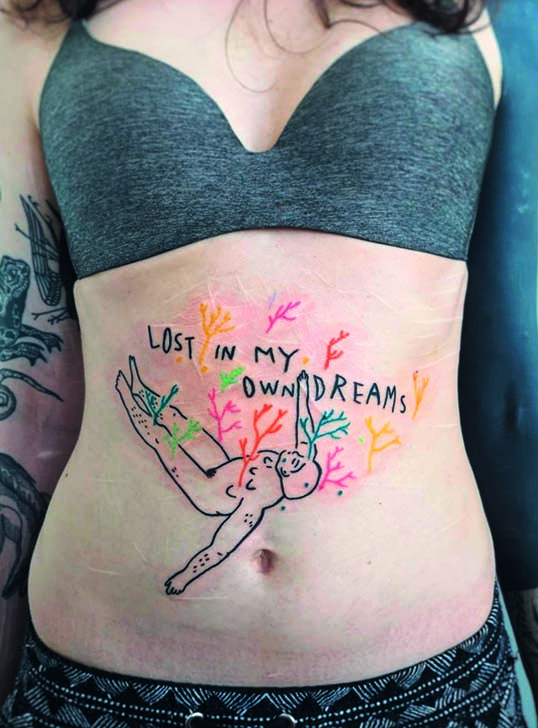In recent years, having received a considerable boost by social media, a young and dynamic scene has emerged that is dedicated to what has become known as queer tattooing. This special community, which is growing steadily, has been born out of a desire to break with the hierarchies and patriarchal structures of traditional tattoo art.

It aims to create safe, tolerant, and inclusive spaces where queer, nonbinary, and trans people can experiment away from the mainstream and develop their own individual styles and techniques. In their work, many tattoo artists break free from the destructive, heteronormative, and capitalist ideals of beauty, creating a visual language that subverts the long tradition of cultural appropriation which characterizes the traditional tattoo scene. Their designs reveal a unique creative flair for queer iconography.
Queer Tattoo – published by Verlag Kettler earlier this year – is the first comprehensive introduction to this vibrant and diverse queer tattoo community. It presents 50 international tattoo artists with the help of extensive portraits, texts, and series of images.

An extract taken from the Preface, written by Stewart O’Callaghan
Queer Pasts and Future Paths
Tattooing has taken an interesting path in its migration from indigenous cultures and communities, who practise the art with deep reverence, to its modern western application focussed primarily on aesthetics. Tattoos have been considered lowbrow when worn by the sailors who were exposed to these cultures, yet highbrow when the artform was later adopted by European nobility. Over time, the most pervasive association with tattoos has been the lower class, the rowdy or even the criminal, in part driven by the Americanisation and hypermasculinisation of the industry in the penny arcades of the 1950s and 60s. For decades, we have seen designs repeated, referenced, and reimagined, all the while toying with the line between appreciation and appropriation. With tattooing’s recent rise in popular culture alongside the growth invisibility of queer identities there appears to be, in my mind, a pronounced amnesia around the queer tattooers that helped us get to where we are today.

Queering the Culture
Tattooing as an industry has a reputation for misogyny. It has been evident in the gatekeeping of the craft, the treatment of female tattooers, the objectification of women on the covers of our magazines, convention posters, glove boxes and soon. We have even seen how this attitude bleeds into the treatment of some customers. This is not to say every tattooer or shop falls into this characterization, but there is an undeniable history here that queer spaces have rightly chosen to detach themselves from. Instead of the patriarchal and hierarchical structures of typical tattoo studios, queer tattooers have developed coops and collaborative approaches where responsibility is shared. These spaces allow for a revolution in the way we represent our community in our spaces and how we create an environment for our clients to feel most at ease. This is not to say that traditional tattoo shops do not have their own charm and merits. There is a wealth of culture, knowledge and history in these spaces. I entered tattooing the old-fashioned way like Steward and Raven, sourcing equipment and trying out in the local shops. After finding a mentor, I underwent a two year traditional apprenticeship that took me from needle making to tattooing at conventions. Back then, coops were uncommon and the competitive, machismo environment of the walk-in shop was the norm. Existing in these spaces as an openly queer person often involved challenging the attitudes around you. There were times when this felt like a burden and there were times when it felt like progress.
Queer Tattoo (Verlag Kettler) is available now.

